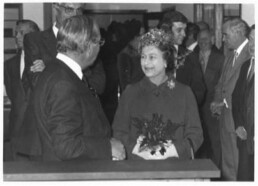Features | By Simon Watts
Moments of challenge are opportunities for advantage
How do universities tackle the significant challenges facing Higher Education? By uniting with a partner that shares their vision and mission.
Since the start of this year, City has been working on a proposal with St George’s, University of London to create a combined multi-faculty institution with an exciting vision for education, research and enterprise strongly aligned with City’s mission as the University of business, practice and the professions.
The Councils of both institutions have offered strong support for the strategic rationale, and due diligence and financial planning is continuing. Should the venture go ahead, there will be a staged transition process to create a combined multi-campus institution.
A collective ambition to face future challenges
The combination of a world-leading medical and health sciences institution and a university of City’s capability and unique focus will deliver excellence in practice within and across traditional disciplinary boundaries in teaching and research.
As the UK’s only university dedicated to medical and health sciences education, training and research, St George’s cares deeply about health underpinned by science and high-impact research. City shares a clear commitment and strong track record in health sciences. Together, the institutions will be able to address the challenges of health and the health workforce, a critical social purpose.
Speaking about the merger, City’s President, Professor Anthony Finkelstein said:
“A combined institution will be more than the ‘sum of our parts’. It will incentivise cross-faculty collaboration, interdisciplinary working, and enterprise. Our current offer in health focused teaching and research has little overlap. We intend to rapidly build new academic activity at the interface of health with business and management; law; policy; engineering; computing; communications and creativity.”
This development enhances City’s distinctiveness, accelerates the University’s strategy for growth and puts both institutions in a stronger and more resilient position to face future challenges, particularly as the HE sector in London evolves in the years ahead.
“We believe that moments of strategic challenge are also opportunities for advantage. These moments favour vision and collective ambition. This is an extraordinary opportunity.”
– Professor Anthony Finkelstein, President of City, University of London.
Read on to learn more about City’s new partner, which is shaping modern health with transformative research and expert teaching, and which counts some of the founders of modern medicine among its alumni.
About St George’s
St George’s, University of London is the UK’s specialist health university. Based in Tooting, south London, it is home to over 5,500 students and more than 800 members of staff. Its innovative approach to education develops well-rounded, highly skilled clinicians, scientists, and health and social care professionals.
- It is ranked first for graduate prospects by the Complete University Guide 2023.
- It produces world-class research which ranked joint 8th in the UK for research impact in 2021.
- It holds an Athena Swan institutional Silver Award in recognition of its commitment to equality, diversity, and inclusion.
- It is the only UK university to share a clinical environment with a major London teaching hospital (St George’s Hospital). This is also where some series of the Channel 4 television show 24 Hours in A&E are filmed.
- St George’s was the first UK institution to launch an MBBS Graduate Entry Programme, a four year fast-track medical degree course open to graduates in any discipline.
St George’s research transforms the lives of people around the globe. All of the university’s research institutes focus on biomedical and scientific discovery, advancing the prevention and treatment of disease in the fields of population health, heart disease and infection – three of the greatest challenges to global health in the 21st century. Its innovative approach to education results in well-rounded, highly skilled clinicians, scientists, and health and social care professionals.
A brief history
St George’s has a long, illustrious history of training doctors, dating back more than 250 years.
1733: St George’s Hospital opens at Hyde Park Corner. The new hospital is arranged on three floors and accommodates 30 patients in two wards, one for men and one for women.
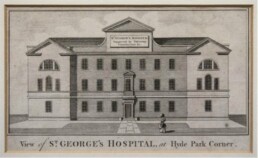
1752: Formal registration of pupils begins.
1756: The influential anatomist and surgeon John Hunter begins courses at St George’s. He is regarded as one of the founders of scientific surgery, although many of his experiments are now controversial.
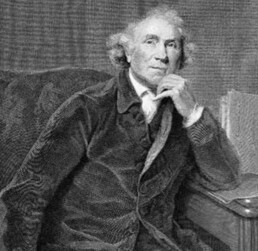
1796: Edward Jenner (a student from 1770 to 1774) successfully performs the first vaccination against smallpox, replacing the earlier practice of variolation with a safer method and leading to the eventual complete eradication of the disease in 1980.
1817: Hajee Baba may have been the first Muslim student at St George’s. He enrols in 1817 and goes on to become one of the first Iranian medical practitioners to study in Europe during this period.
1835: The official opening ceremony for the medical school is held in the Anatomy Theatre on new premises in Kinnerton Street, and features the dissection of an ancient Egyptian mummy.
1836: The medical school becomes a constituent college of the University of London, soon after the latter’s establishment in 1836.
1858: Gray’s Anatomy is published. It is the product of the collaboration between Henry Gray, and Henry Vandyke Carter, demonstrator in anatomy at the school. It is one of the world’s most famous textbooks and has been updated 40 times since it was first published. The book also inspired the name of the US television drama, Grey’s Anatomy.
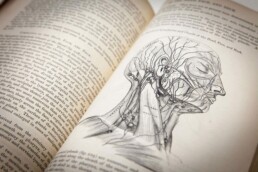
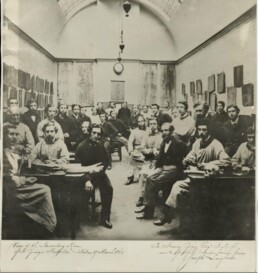
1915: In response to wartime staff shortages, St George’s admits its first four female medical students. Helen Ingleby, one of the four women accepted alongside Hetty Ethelberta Claremont, Marian N. Bostock and Elizabeth O’Flynn, goes on to become Pathologist of the Albert Einstein Medical Centre in Philadelphia in 1945.
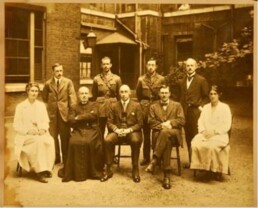
1947: Muriel Powell becomes Matron, at the age of just 32. Considered too young by the medical establishment, she swiftly proved her detractors wrong, working at St George’s for 22 years. In 1968 she was made a Dame for services to nursing and became the most famous nurse in Britain since the First World War.
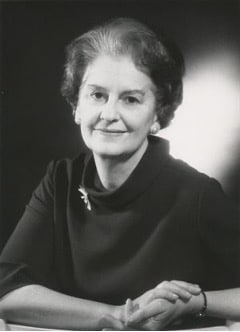
1976: The first phase of the new St George’s Hospital Medical School opens in Tooting with 80 students.
1978: Pioneer of fertility treatment Patrick Steptoe, (alumnus, MBBS 1939), is responsible, alongside biologist and physiologist Robert Edwards, for developing in vitro fertilisation (IVF), leading to the birth of the first test-tube baby in 1978, Louise Brown.
1980: St George’s at Hyde Park closes its doors for the final time and HM Queen Elizabeth II formally opens the new St George’s Hospital Medical School at Tooting on 6 November 1980.
